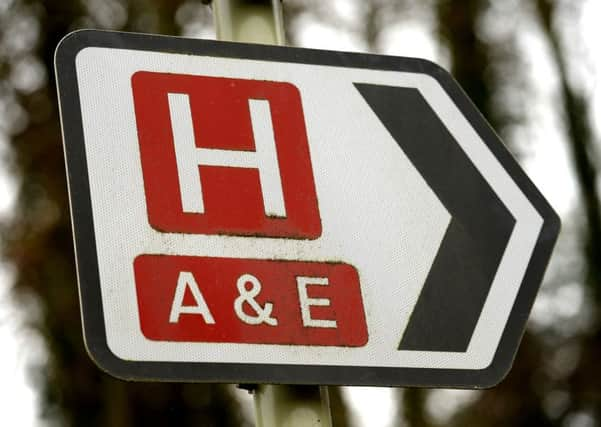Let's put GP surgeries in A&E, say doctors


Urgent action is needed, experts argue, as accident and emergency departments continue to miss key targets for waiting times across the country.
Now, a new poll of GPs and secondary care doctors has found that more than half - 61 per cent - believe the answer could lie within the siting of surgeries within a hospital setting.
Advertisement
Hide AdAdvertisement
Hide Ad“Urgent action must be taken to tackle the escalating crisis in A&E departments across the country, where patient numbers have been increasing for more than a decade and estimates suggest that many patients should be directed to primary care services,” said Gareth Thomas, managing director of Wilmington Healthcare which carried out the research. “Our survey shows that a significant proportion of doctors believe that co-located GP services could help to alleviate the problem, while improving patient education and access to primary care and out-of-hours services are also key.”
There are widespread concerns that patients turn to A&E rather than attempting to see a GP first. NHS figures show that 13 per cent of people who attend A&E are discharged without requiring treatment, with a further 35 per cent sent home after being given guidance only.
Now, the poll of more than 500 doctors found that 27 per cent believed up to a third of people go to A&E when they should be seen by a GP or nurse. Some 13 per cent said more than half of patients should be redirected to GP services on arrival at A&E. And 75 per cent thought people went to A&E unnecessarily because they thought they would be seen faster.
Taj Hassan, president of the Royal College of Emergency Medicine, said this was evidence of what they had been arguing in favour of for years: “It is important to match the level of services available to reflect both rising demand and our ageing population.
Advertisement
Hide AdAdvertisement
Hide Ad“Co-location of primary care services can offer some solutions to the challenges faced by the rising tide of patients arriving at emergency departments.”
In November, MPs on the Commons health committee warned that poor performance in A&E has “become the norm” for some NHS trusts. A&E departments are now routinely missing national targets to deal with 95 per cent of patients within four hours.
The latest figures show that of Yorkshire’s six NHS trusts, only Harrogate met the four-hour A&E treatment target in October. Both Bradford and Leeds NHS trusts treated around 85 per cent of patients in the standard time, while for the Wakefield-based Mid Yorkshire NHS trust, that figure was just 80.5 per cent.
Dr Richard Vautrey, Leeds GP and deputy chair of the British Medical Association (BMA), said the idea of siting surgeries within A&E departments is something which has been talked about for many years.
Advertisement
Hide AdAdvertisement
Hide Ad“It’s something that happens already in a number of places,” he said. “One of the challenges is in healthcare resources - is there the space in the first place?
“And the other is when it becomes a draw, and actually creates demand making the situation worse rather than better.
“What we need to try and do is try and increase the capacity in general practice generally so that people don’t feel the need to go to A&E in the first place.”